Vale GALILEO
If I have seen further than others, it is because I have stood on the shoulders of giants - Isaac Newton referring to Galileo
Click on images to see the full-size versions
Galileo was launched on 18 October 1989 by the Space Shuttle Atlantis. Two years later it flew by the Earth and recorded this beautiful image of Australia in high summer.
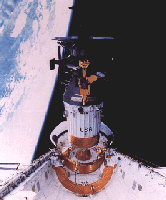 |
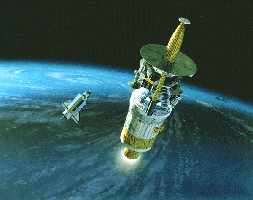 |
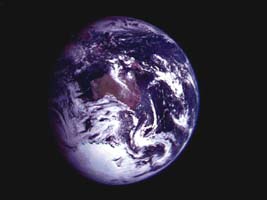 |
| Parkes Gets Involved Shortly after it was launched, the high-gain antenna which was designed to transmit data at rates of up to 134,000 bits per second (bps), failed to fully unfurl thus rendering the antenna useless. Fortunately, a second, smaller, antenna on the spacecraft was brought into operation. This low-gain antenna transmited at very low power in all directions, so that any signal reaching the Earth was extremely weak - weaker even than the static in the radio receivers on Earth. To extract the signal from this background static, it was decided that several tracking antennas would be linked together, or "arrayed", and their signals combined. This would boost the received signal strength enough to let the weak signal from the Galileo spacecraft emerge in a useable form above the background static. Because the signal was weak, the data-flow rate had to be kept very low. To maximise the amount of data transmitted to Earth, new and very sophisticated data compression techniques were also designed and implemented. With these changes, the data rate was increased from an effective 10 bps to a maximum of 160 bps, a great improvement but still considerably less than the planned rate of 134,000 bps. The linking, or arraying, of various tracking antennas around the world cost NASA US$30.5 million to establish. Essentially, the arraying involved linking the 64-metre antenna at Parkes with the 70-metre antennas of NASA's Deep Space Tracking Network at Goldstone in California, Tidbinbilla near Canberra, and Madrid in Spain. It was soon after the antenna problem was diagnosed that the CSIRO's Australia Telescope National Facility (ATNF) was contacted by NASA/JPL to ask that the Parkes observatory be allowed to assist in recovering the data from Galileo. In order to commit itself to tracking the spacecraft over such a long period, and at the same time continue to do general astronomy, the observatory first had to modify the telescope to accommodate the new "Galileo" receiver, and to allow observers to swap quickly between different receivers. To this end, NASA agreed to finance the construction of a new aerial cabin: the room at the focus of the telescope where the receivers sit. This new aerial cabin would hold four receiver packages instead of just one, as in the old focus cabin, and any of them could be swung into action within minutes. This increased frequency agility meant that the Parkes telescope would be more efficient and flexible than ever before. As well as the new aerial cabin, the ATNF built a new low-noise S-band receiver specifically for picking up Galileo's weak signals. The construction of the new aerial cabin was completed in early 1996, and the first test track was performed in March. The contracted tracking period ran from 28 October 1996 to 6 November 1997 for about nine hours every day. |
Preparing for the Tracks
Bruce Thomas project managed the construction of the new aerial cabin, the receiver translator and the feed horn. Connell Wagner were the consulting engineers and Evans Deakin were the main contractors.
The CSIRO, itself took a big role in the aerial cabin upgrade. Apart from our projected role in commissioning the system, we actually ended up designing and building much of the aerial cabin electronics. That the cabin was operational on time was the result of exceptional work between Peter Hall, Brett Preisig, Jared Thompson and Andrew Hunt.
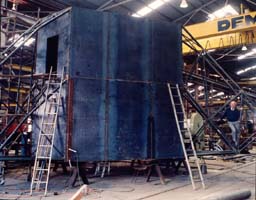 |
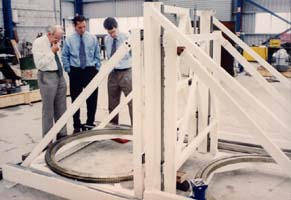 |
In late 1995, the new aerial cabin was installed. But first, the old aerial cabin had to be removed.
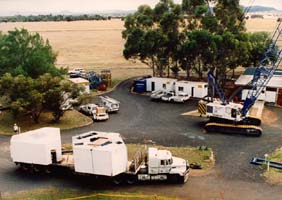 |
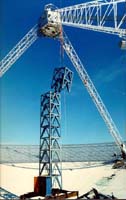 |
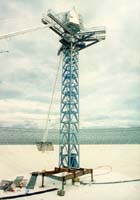 |
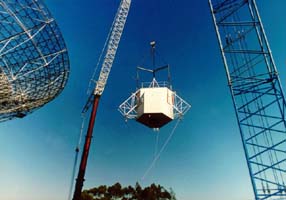 |
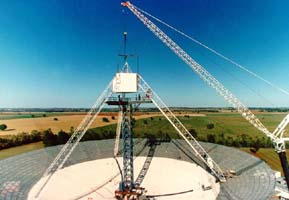 |
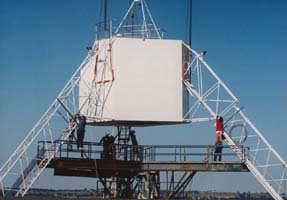 |
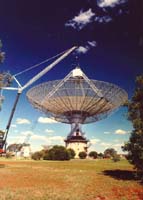 |
A new low-noise S-band receiver was designed and constructed by the entire ATNF Receiver Group, with Mal Sinclair managing the project. During a special ceremony to officially launch the Parkes Galileo Tracks, on Monday, 25 March 1996, the receiver was hoisted into position.
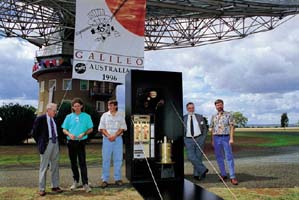 |
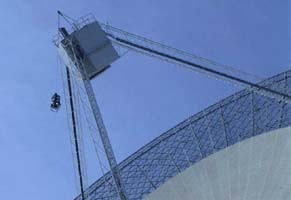 |
Several distinguished visitors were present at a ceremony to officially launch the Parkes Galileo Tracks. Dr. Edward C. Stone, the Director of JPL, was the guest of honour as were Mr. Malcolm Macintosh, the Chief Executive of the CSIRO, Prof. Ron Ekers, the Director of the ATNF and Mr. Peter Churchill, the Director of the Tidbinbilla Tracking Station (CDSCC).
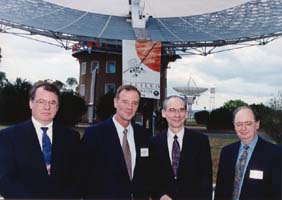 |
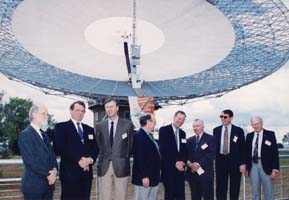 |
Following the speeches, the guests were taken on a hayride by the Officer-in-Charge of the Parkes Observatory, Prof. Marcus Price, while Dr Paul Payne gave them a tour of the telescope.
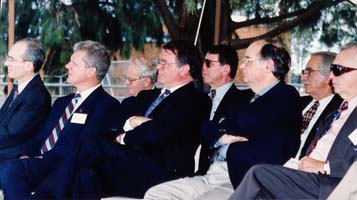 |
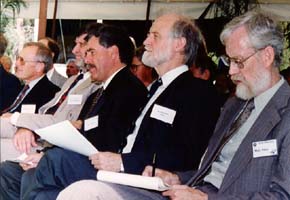 |
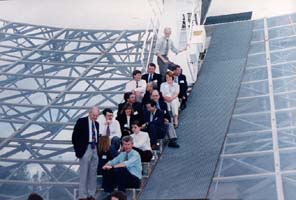 |
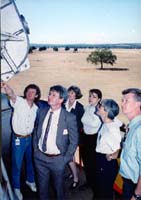 |
The refurbished Parkes Telescope with the new aerial cabin lit up at night. The old aerial cabin was displayed adjacent to the dish.
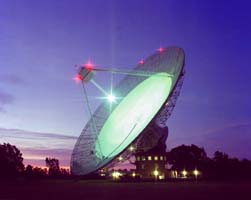 |
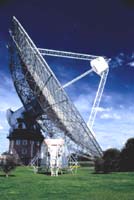 |
The Parkes Galileo Tracks
On Monday, 28 October 1996, the contracted tracking period began.
The Deputy OIC, Dr Peter Hall, was responsible for the development of the Galileo operations protocol, which Dr Paul Payne later elaborated.
The daily tracks were performed by three principal Galileo operators: Dr Russell Pace, Dr Ian Stewart, and John Sarkissian with occasional help from other observatory staff (Dr Paul Payne, Brett Preisig, Barry Turner, Rick Twardy, Martin McColl and Euan Troup).
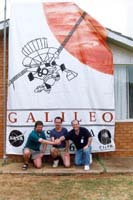 |
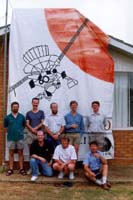 |
As the seasons changed, the starting times of the daily nine-hour tracks
slowly migrated through the day. During the course of the year, the tracks shifted from
being wholly in daylight to wholly at night. The night tracks often saw the operators alone at the telescope quietly going about their tasks. During the early morning drive from the town to the telescope, operators often had to dodge
kangaroos and rabbits along the way, while Jupiter rose, beckoningly in the East. Below are images of the telescope tracking the setting Galileo in December 1996, with Russell Pace at the helm.
|
|
|
During the tracks, operators constantly monitored the status of the
telescope and the receiver, ever ready to take immediate steps if
anything untoward should happen. Track time was seldom lost but, when it
was, it was almost always because of the wind. For structural and safety
reasons, the telescope is designed to stow whenever the wind reaches a
critical speed. This was frustrating but JPL was able to work around it so
that it had little effect on the data reception.
On all previous planetary missions, the data rate from the spacecraft had been high enough to have the data processed in real time and displayed within minutes of reception. With Galileo, however, the low bit-rate meant that it often took weeks for the information to be fully received and processed. And so we saw the magnificent images of the Jovian system when everyone else did - when they were put on the Internet; there was no privileged position for us in that respect.
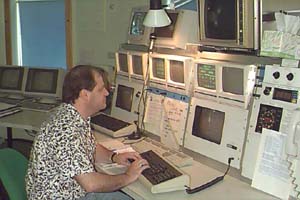 |
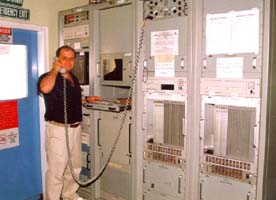 |
On 6 November 1997, the Galileo spacecraft passed the smallest of Jupiter's
big moons, Europa. With this encounter, its initial eleven-orbit tour of
the Jovian system came to an end and so did the Parkes Telescope's Galileo
tracking duties. Below is an image of the telescope tracking the setting Jupiter for the last time (with Venus setting to the bottom left). Most of the tracking team was present to farewell Galileo.
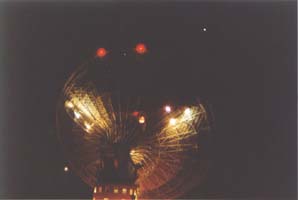 |
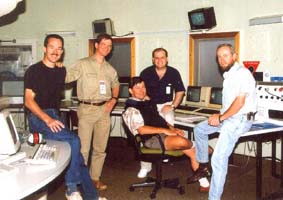 |
The last night of tracks was celebrated by most of the Parkes Galileo Tracking Team (absent were Russell Pace, Martin McColl and Euan Troup). Dr Paul Payne was present in spirit via the telephone.
Throughout the course of the tracks the Parkes Galileo team developed an excellent working relationship with the various tracking teams at Tidbinbilla and JPL. They were often able to solve problems before they arose and posed a threat to the data acquisition. The Parkes tracking team was very proud that no tracking time was lost due to equipment failure or operator error. The spacecraft was tracked for more than 97% of the assigned tracking time, greatly exceeding all expectations.
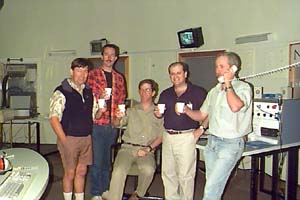 |
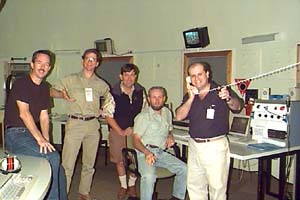 |
It was a privilege for the Parkes Observatory to share in the acquisition of
so much new knowledge of the Jovian system. With its participation in the Galileo mission, the Observatory continued its proud record of contributing to
the success of some of the most significant and historic space missions.
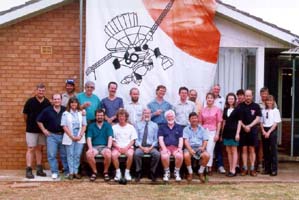 |
|
The following email was received from Patrick E. Beyer, the Tracking Mission Support Manager for
Galileo, at the conclusion of the Parkes Galileo tracking duties.
John, Len and all CSIRO personnel at Parkes/CDSCC: Your efforts have truly been amazing and ever-so professional throughout the past few years, and from my viewpoint, especially during array operations over the past year. It has been thrilling to watch your performance. I know Galileo and NASA are thoroughly pleased with the return on investment. The teamwork and willingness to "go the extra mile" as we say over here have been most appreciated. Thanks for all the hard work. Regards,
Patrick E. Beyer |
Galileo's Legacy
The Galilean Moons Io, Europa, Ganymede and Callisto were the main target of study for the Galileo spaceprobe, afterall that's why it was called Galileo.
 |
Io is a moon about the same size as our own Moon. It is the most volcanically active body in the Solar System. Galileo witnessed many eruptions of it's volcanoes and imaged the surface to unprecedented resolution.
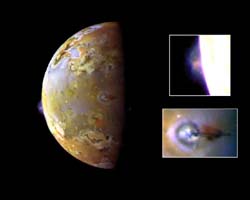 |
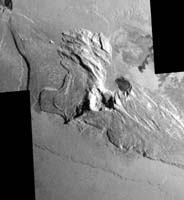 |
Europa is the smallest of the Galilean Moons, being a little smaller than our own Moon. Galileo found evidence that suggests a great ocean of water lies below the frozen surface of this moon. Many astronomers speculate that life may even exist within this ocean. It is to preserve the pristine surface of Europa and prevent any possible Earthly contaminants from infecting it, that Galileo is being deliberately plunged into Jupiter. Here we see true and false colour images of Europa.
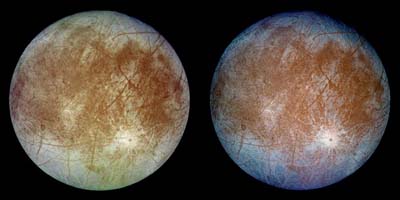 |
Europa has a remarkably smooth surface. Ice-rafts, similar to those found in Antarctica, indicate a constantly moving and jostling surface that wears the surface features away.
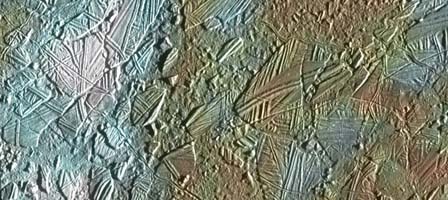 |
Ganymede is the largest moon in the Solar System. Galileo was able to image the surface to unprecedently high resolution.
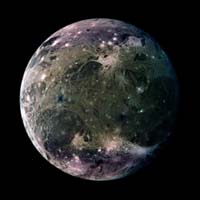 |
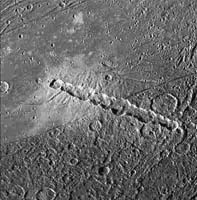 |
Calisto is the most cratered body in the Solar System. It also was captured by Galileo's sharp eyes.
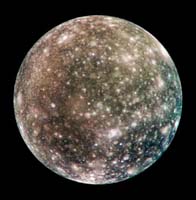 |
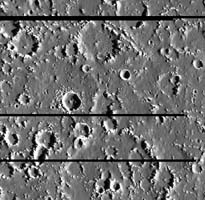 |
Jupiter itself also came under Galileo's scrutiny. Jupiter's ring system was imaged, and the Great Red Spot was analysed in true and false colour to highlight the features within it.
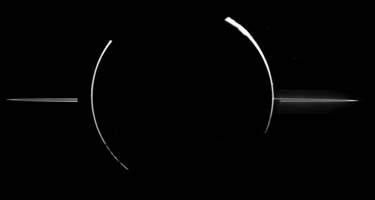 |
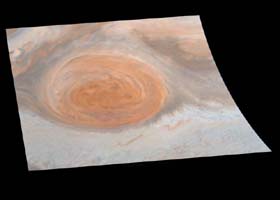 |
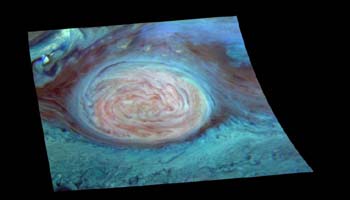 |
One of Jupiter's little moons, Amalthea, was a target of study. It is believed to be a captured asteroid.
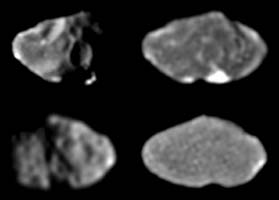 |